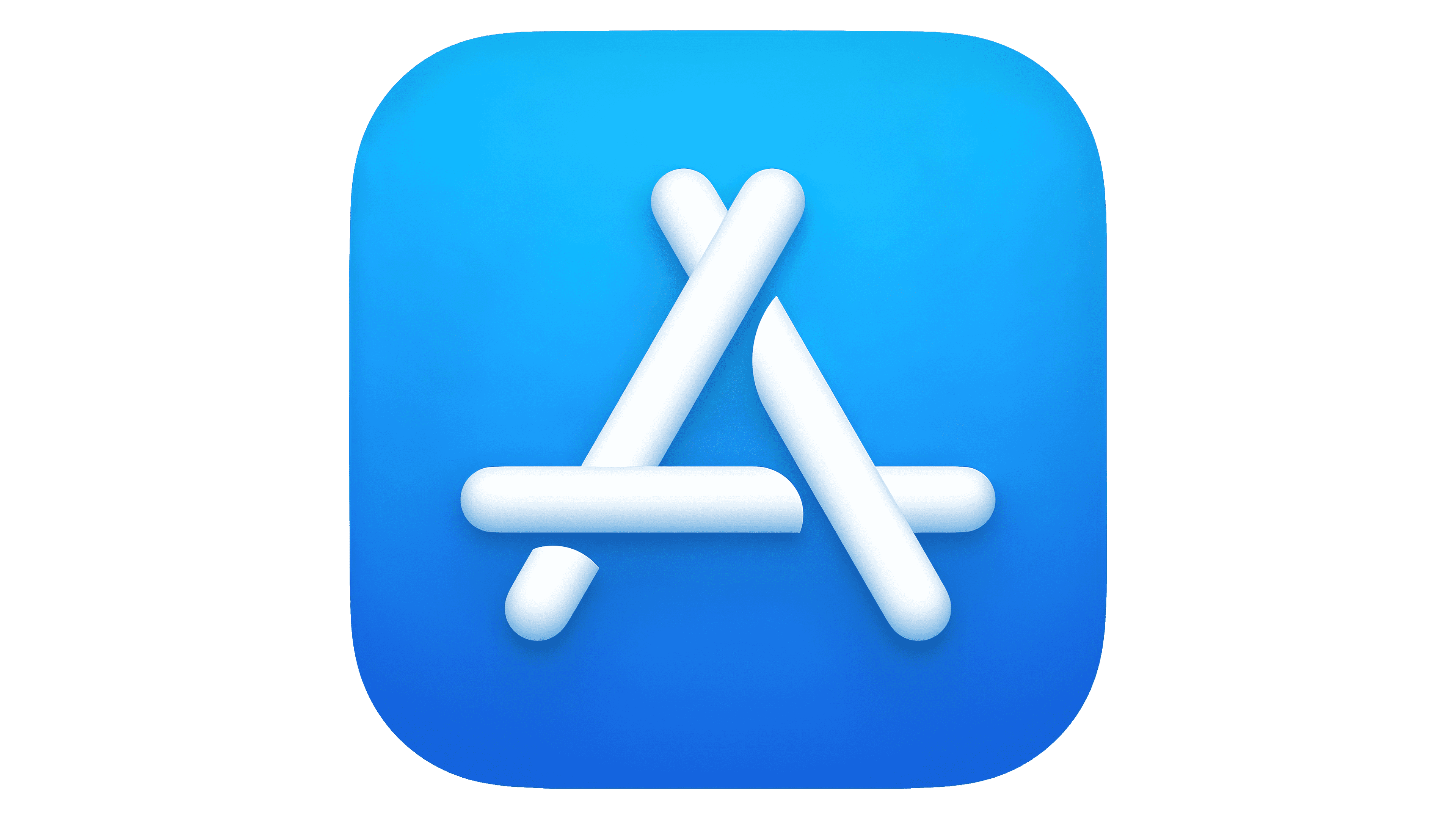App Store Logo
Tags: Apple | digital marketplace | operating system
At the heart of the digital application universe is the App Store, an innovative platform established by Apple Inc., a company founded by the visionary trio Steve Jobs, Steve Wozniak, and Ronald Wayne. The App Store, as a cornerstone of Apple’s ecosystem, primarily serves as a hub for downloading and managing a diverse range of applications and games tailored for iOS, iPadOS, macOS, watchOS, and tvOS devices. This digital marketplace transcends geographical boundaries, making its presence felt globally. It’s not just a store; it’s a gateway for millions of users from every corner of the planet – from the bustling cities of North America to the vibrant landscapes of Asia, and the historic nations of Europe, to access an unparalleled variety of applications. These applications span across multiple categories, including but not limited to education, health, entertainment, and productivity, making the App Store a critical player in the digital and technological spheres worldwide.
Meaning and History
The inception of the App Store by Apple Inc., under the leadership of Steve Jobs, marked a significant milestone in the digital world on July 10, 2008. This platform was not just another digital marketplace; it was a harbinger of a new era in application distribution and usage. In its first year alone, the App Store shattered records by accumulating over 1 billion downloads, a testament to its immediate impact and reach. As the years rolled by, the App Store continued to break new ground. It expanded its app catalog exponentially, introducing new genres and categories, and it saw a dramatic increase in its global user base. A pivotal moment in its history was the introduction of new monetization avenues for developers, including subscription models and in-app purchases, which revolutionized the way apps generate revenue. The App Store has consistently set high standards for app quality and security through stringent review guidelines, thereby ensuring a safe and reliable user experience. Today, the App Store is not just a segment of Apple’s business; it’s a critical contributor to its financial strength, continuously adapting and evolving with technological advancements and changing user demands. It remains at the forefront of the app distribution market, a testament to its enduring legacy and ongoing influence in the digital world.
What is the App Store?
It’s a digital marketplace, owned and operated by Apple Inc., providing a platform for users to download and update a myriad of applications and games. This platform supports various operating systems like iOS and macOS, playing a pivotal role in the digital economy by driving app innovation and accessibility.
iOS
In the realm of mobile technology, a groundbreaking platform emerged in 2017, primarily catering to Apple Inc.’s array of devices. Originally christened as iPhone OS, the name transitioned to iOS to reflect its compatibility with an expanding array of Apple’s digital offerings. This platform’s design ethos embraced a unified aesthetic, creating a cohesive visual language across its suite of applications. Central to its branding was a logo, ingeniously designed with three interlocking elements that form the letter ‘A’. This iconic symbol, embodying the platform’s identity, has seen two stylistic evolutions, with each iteration maintaining its emblematic essence without being christened with a specific title.
2008 – 2013
The debut logo of the App Store was a testament to inventive design, making its mark with the release of iPhone OS 2 and remaining until the era of iOS 6. It featured a captivating blue square with softened corners, encasing artistic tools – a pencil, brush, and ruler – arranged in a circular layout. This design was accentuated with white rays that extended from the center to the square’s edges, creating an illusion of depth and dimensionality through a nuanced gradient effect.
2013 – 2017
A subsequent redesign ushered in a new visual era. The rays were omitted, giving way to a gentler blue tone. The gradient was reimagined, now displaying a deeper shade at the lower end, gracefully blending into a cyan hue towards the top. This refreshed emblem became a hallmark of devices operating on iOS versions 7 to 10, symbolizing a subtle yet significant shift in design philosophy.
2017 – Today
With 2017 came a bold move towards minimalism, as seen in the Apple Store logo’s transformation. The intricate stationery motif was replaced by three stylized lines that came together to form an asymmetrical triangle, evoking the playful imagery of ice cream sticks. This redesign also saw the removal of the white ring, alongside a reduction in the gradient’s intensity. This marked a departure from complexity, steering towards a more abstract, streamlined aesthetic that mirrored the evolving trends in design and technology.
macOS
In 2011, Apple Inc. introduced the macOS platform, which has since become a leading choice for desktops and laptops. The operating system, initially named Mac OS X, underwent several name changes to align with Apple’s other products, such as tvOS, watchOS, and iOS. Starting as OS X in 2012, it was rebranded to macOS in 2016. Each major version often brought a logo redesign, yet intriguingly, none included the program’s name.
2000 – 2004
The logo is a creative and minimalist representation of the App Store for macOS. It consists of a yellow wooden pencil and a red paintbrush, both common tools associated with creation and design, crisscrossed over a simple wooden ruler. The ruler, placed horizontally, serves as a stabilizing baseline for the composition, suggesting precision and measurement, which are key in both artistic and technological creations.
This emblematic visual metaphor ingeniously combines elements of traditional artistry with the modern digital world, implying that the App Store is a place where art and technology intersect. The pencil and brush are not merely art tools; they symbolize the creative and innovative spirit of the applications available on the App Store. The use of everyday objects in the logo renders it approachable and relatable, while also communicating the core message that the App Store is a platform for both developers and consumers to craft, enhance, and bring to life their creative and functional visions.
The simplicity of the logo is deliberate, encapsulating the ease and accessibility of using the App Store. The choice of bright, primary colors—yellow for the pencil and red for the brush—against the neutral background of the ruler, not only catches the eye but also creates a friendly and inviting atmosphere. This design is reflective of the user-friendly interface and experience that the App Store aims to provide. The crossed tools above the ruler symbolize a collaborative effort, which can be seen as a nod to the community of developers and users who contribute to the ecosystem of the App Store.
2011 – 2013
The original macOS logo featured a three-dimensional, circular design resembling a glossy medal. At its heart was a unique arrangement of a ruler, pencil, and brush, crafted from geometric shapes and resembling a hut, symbolizing the OS’s core functions and identity. The logo sported a light blue background with a radial gradient and a gray, shadowed 3D border.
2013 – 2017
A subsequent redesign introduced a flatter logo with refined depictions of the pencil and brush, resembling their real-life counterparts, and a slimmer ruler. The background shifted to an aquamarine blue with a vertical gradient, and the gray border lightened and lost its shadows. This iteration subtly hinted at the letter “A” from Apple’s name.
2017 – 2019
In 2017, the logo’s blue hue deepened into a striking aquamarine, and the gradient became linear, darkening downwards. The frame’s upper edge was accentuated in white. The familiar pencil, brush, and ruler were replaced with rounded-end sticks, arranged to mimic a hut and to subtly form the letter “A,” representing Apple’s initial.
2019 – 2020
Later updates saw the logo’s blue center replaced with aquamarine, surrounded by a blue ring. The gradient remained, albeit more subdued, and the white highlights were softened with a light gray tint.
2020 – Today
To achieve brand consistency across its digital products, Apple transitioned the logo from a circle to a square shape with rounded corners, adopting the aquamarine-to-dark-blue linear gradient from the 2017-2019 design. The central motif of intersecting sticks was rendered in a three-dimensional style, and the frame was removed for a cleaner look.
tvOS
Developed by Apple Inc., this unique software ecosystem is tailored for its range of digital media devices, primarily optimized for an immersive TV experience. This innovative platform first made its debut in the latter part of 2015 and has since undergone several transformative updates, with the most recent one in the summer of 2022. This latest revision not only enhanced its functionality but also introduced a new visual identity for its integrated application, featuring a creative and distinct symbol. Originally introduced as Apple TV, the platform was later rechristened as tvOS, aligning it with Apple’s cohesive product naming strategy alongside macOS, watchOS, and iOS. This renaming was more than a mere label change; it symbolized the integration of Apple’s diverse product range under a single, iconic brand identity, marked by a specially designed “A” composed of three symbolic elements, each representing a core aspect of Apple’s innovation ethos.
2015 – 2017
The program’s visual identity was established at its launch, mirroring the style of the macOS logo from 2013 to 2017. This was a deliberate strategy by the developers to create a unified aesthetic across all Apple products, facilitating a harmonious brand experience. The advantages of this approach were manifold: it allowed users to effortlessly identify and navigate between different Apple applications, simplified the search process within Apple’s specialized store, and ensured that Apple’s offerings stood out distinctly from those of other manufacturers. The initial logo design cleverly incorporated a pencil, a ruler, and a brush, each suspended in an ethereal manner within a horizontal rectangle that gradually transitioned from a light blue to a deep cobalt hue. The floating arrangement of these elements created a sense of weightlessness, with their tips carefully positioned not to touch, enhancing the logo’s dynamic appearance. The brush, in particular, underwent a subtle yet significant modification, with its bristles artistically refined to mirror the natural curvature found in actual paintbrushes, adding a touch of realism to the design.
2017 – Today
A significant reimagining of Apple’s visual identity occurred in 2017, with a bold redesign that introduced major changes, particularly to the tvOS logo. The new design featured three rounded sticks, a nod to the macOS logo style prevalent at the time. These sticks, in a stylistic pivot, replaced the earlier ruler, pencil, and brush motifs to further streamline the visual consistency across Apple’s logos. This fresh configuration, resembling a stylized hut, was more than a decorative element; it was a symbolic representation of the Apple brand, with the formation subtly hinting at the company’s initial letter “A.” The design was characterized by broad, overlapping stripes that created a dynamic interplay of light and shadow. The clever arrangement saw the right side of the central stripe ingeniously loop under the right leg of the “A,” while the left side elegantly arched over the left diagonal stroke. Set against a two-dimensional flat backdrop within a horizontal rectangle, the logo’s color palette transitioned to lighter shades, moving from a rich deep blue to a vibrant aquamarine, symbolizing a new era in Apple’s design philosophy.














